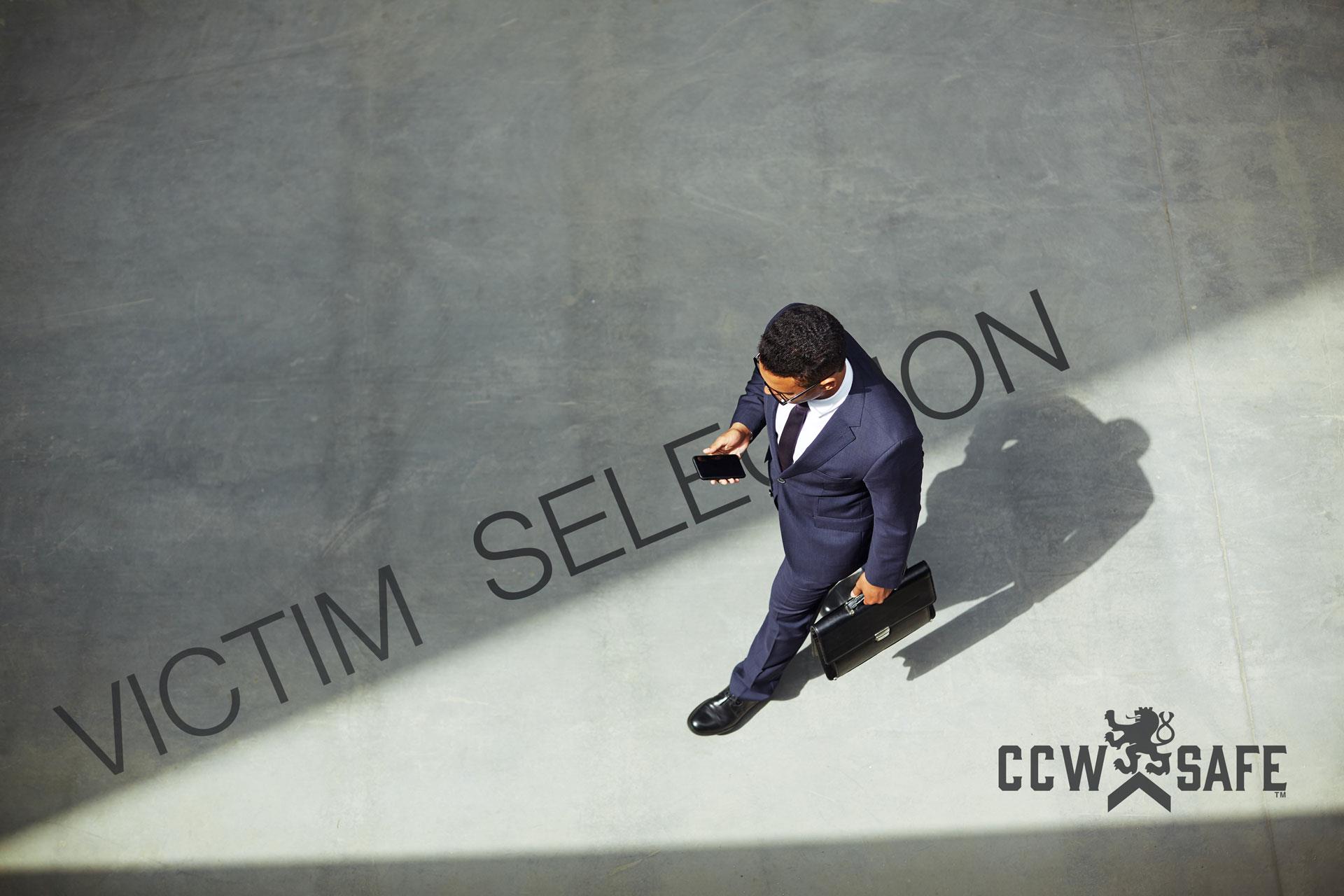
Posted on October 15, 2018
Flunking The Victim Selection Test
FLUNKING THE VICTIM SELECTION TEST
I do not believe that anyone can accurately explain why people become violent criminals. Many theories exist as to whether the cause is inherent nature, the lack of nurture during the formative years, or a combination of both. In the middle of a violent criminal assault, how important is it to know the correct answer? At that point, it is not necessary to know what is behind the assailant’s motivation, but it is important to know ways to effectively respond and successfully survive with little or no injury.
Perhaps a question we can more readily answer is what we can do to avoid being selected as a target by opportunistic criminals. At least one answer is to simply become a “hard target” by not appearing to be an “easy mark” as well being someone that is difficult for a criminal to readily get close enough to or in a suitable position to ambush without being observed and possibly getting injured or killed. In order to successfully assault another person, the violent criminal actor will typically be required to see a target, choose a target, close on that target, and then engage. This means that there are three separate opportunities for the concealed carrier to disrupt an actual attack.
Keys to success may be a result of our doing the following:
- Always being aware. Simply keep one’s head on a slow swivel (asking yourself “who is that and what are they doing?”), make momentary eye contact when around unknown persons by virtue of a quick, non-aggressive glance, and avoid task-fixation (texting, talking on the phone, etc.) while moving through transitional areas such as parking lots, parking garages, sidewalks, or any place persons travel through to get to one location from another. Persons who move in this manner are often observed, assessed, and dismissed as a possible target by criminals on the hunt that they never even see.
- Make smart decisions in advance and abide by them. Use caution when it is necessary to go a location where contact with a criminal is more likely, and better yet, avoid it altogether. As noted trainer Tom Givens says: “100% of all bar fights occur in bars. That should be a clue.” Far too many persons have become victims simply because they made a conscious decision to go somewhere or take an action in which there was little gain knowing full well that there was risk involved. If it is not safe to be in a location without a handgun, it is not safe to be there with one.
- Maneuver sensibly when outside of an area that you do not have under control. Simply stated, avoid choke points when possible (unnecessarily walking between two cars in a parking garage or lot), always walk wide of blind building corners and parking lot pillars, and look both ways before stepping out of a doorway into a public area.
- Learn how to interact with strangers attempting to engage you in public areas so as to avoid dangerously close contact distances and reduce your chances of getting flanked by an unseen criminal cohort. The Craig Douglas (AKA “Southnarc”) method of Dealing with Unknown Contacts is the absolutely best system of accomplishing this in my opinion, and there exists a number of internet videos of him describing how to do this in detail.
The concealed carrier who constantly keeps in mind the four keys set out above has more than likely significantly decreased the chances of making actual physical contact with a violent criminal, and if contact is unavoidable, increased their chances of not only prevailing in the ensuing fight but successfully dealing with the American legal system afterwards. As my grandmother might have said, “The juice is definitely worth the squeeze.
 |
Steve MosesSteve is a long-time defensive weapons and instructor based out of Texas who has trained hundreds of men and women of all ages for more than two decades on how to better prepare to defend themselves and their loved ones. Steve has completed over 80 private-sector and law enforcement-only defensive weapons and tactics classes, and has trained civilian and law-enforcement officers in six states. Moses is a reserve deputy, former member of a multi-precinct Special Response Team, competitive shooter, and martial artist. Steve has written numerous articles for SWAT Magazine and other publications. Steve is a licensed Texas Level 4 Personal Security Officer and Instructor who was Shift Lead on a mega-church security detail for seven years, and has provided close protection for several former foreign Heads of State. He is currently an instructor at Relson Gracie Jiu Jitsu/Krav Maga in Tyler, Texas and Director of Training for Palisade Training Group (www.ptgtrainingllc.com). |